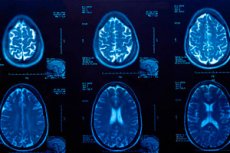
南澳大利亚大学的研究人员表示,对一岁以下儿童进行非侵入性脑部扫描可以识别风险因素并降低成年后中风的几率。
在一项开创性的研究中,科学家发现,尽管医学取得了进步,但脑动脉瘤的模式随着时间的推移仍然保持稳定,这意味着脑血管的变化可以在生命早期轻松检测到。
该研究发表在《BMJ Open》上,分析了 260 年的数据,系统地评估了可导致中风的脑动脉瘤的长期趋势。
中风是全球第二大死亡原因。全球每年有1500万人患中风。其中500万人死亡,另有500万人留下永久性残疾,给家庭、社区和经济带来沉重负担。
在澳大利亚,统计数据显示,中风导致的女性死亡人数超过乳腺癌,导致的男性死亡人数超过前列腺癌。在澳大利亚,每19分钟就会发生一次中风。
超过80%的中风是可以预防的。在澳大利亚,单次中风的预计成本约为30万美元,因此识别早期预警信号不仅是预防的关键,还能节省数百万美元。
首席研究员、神经解剖学专家、南澳大学解剖学和神经解剖学高级讲师 Arjun Burlakoti 博士表示,识别儿童脑血管的变化可以预防日后中风。
布拉科蒂医生说:“脑动脉瘤是指动脉向脑部膨出。它是由动脉壁薄弱引起的。如果脑动脉瘤破裂,可能会导致中风。”
脑动脉瘤可在任何年龄发生。虽然最常见的诊断年龄在31至60岁之间,但儿童脑动脉瘤的发病率几乎与成人相当。儿童动脉瘤的发病率可能与成人相当,因为儿童的寿命比成年期短得多。
“我们的研究表明,动脉瘤的形成和破裂有其内在原因,脑血管的任何变化都可能从出生时就存在。
“这意味着,如果我们能够识别儿童时期大脑动脉网络的变化,我们就可以更积极地监测和测试高危人群的一生。”
研究人员建议使用无创经颅多普勒超声扫描婴儿和儿童的脑血管变异。这项无痛检查利用声波研究脑内外的血流,并检测血管变异。
他们认为,这种筛查方法可以及时干预,并可能预防动脉瘤和中风相关的并发症。
Burlakoti 博士说:“筛查儿童(尤其是 2 岁以下儿童)的动脉成分变异可能是识别脑动脉变异的实用工具。”
“这是一种安全、非侵入性的筛查测试,如果发现任何变异,它为家庭提供了定期监测的途径。
“如果通过简单的筛查测试就能降低风险,为什么不这样做呢?”

